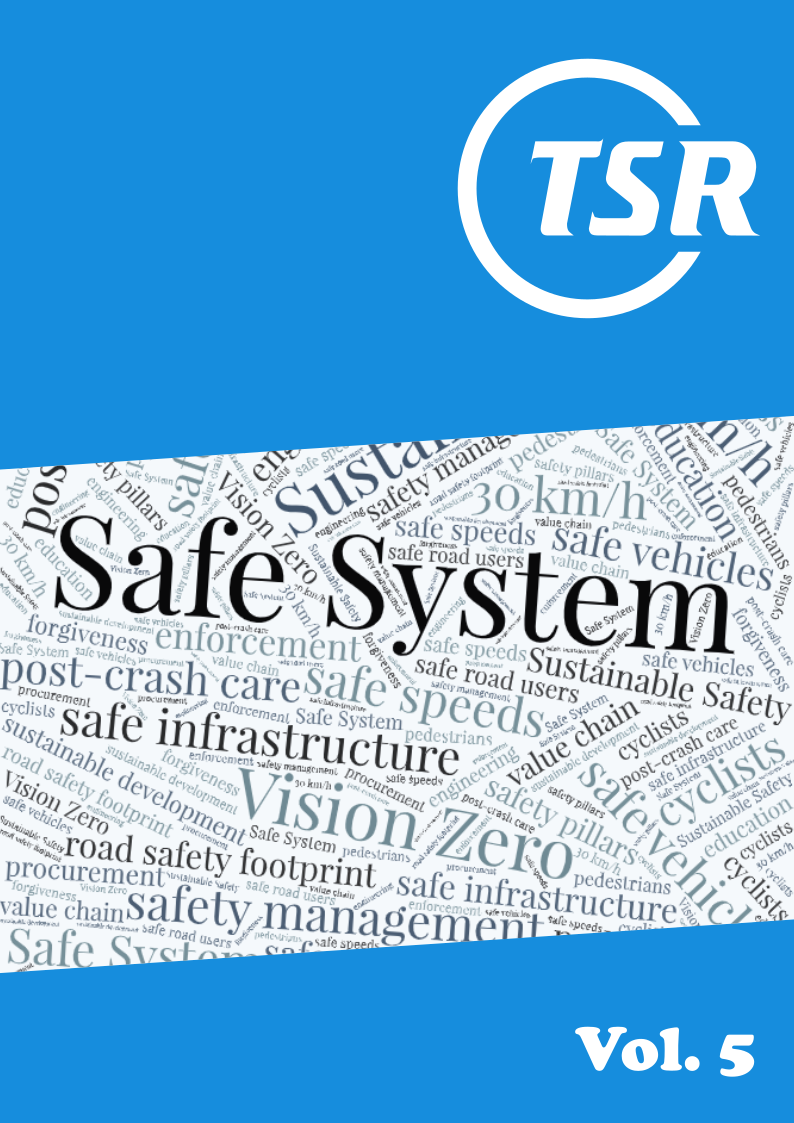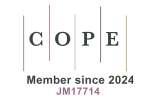Increase road safety or reduce road danger: challenging the mainstream road safety discourse
DOI:
https://doi.org/10.55329/vfer7646Keywords:
discourse, road danger, road safety, systemic violence, worldviewsAbstract
The domain of road safety has a longstanding history in academic research and a well-established position in policy circles. In different contexts in different degrees, this has resulted in important and meaningful interventions that increased overall safety statistics. But are researchers and policy-makers in this domain also reflecting on the underlying values and worldviews on which these interventions are build? Do we fully grasp the choices that are embedded in those values and on how these then solidify into our guidelines, streetscapes and behaviour? In this position paper, I argue that those underlying choices are exactly what is holding back real radical change in making our roads and traffic safe. To do so, I discuss seven mechanisms in how road safety is currently studied, discussed and designed that might aggravate the inherent unsafety it aims to reduce. Building on this, the final part of the paper aims to open up the underlying values by proposing seven potential ‘what-ifs’ away from focusing on increasing road safety to instead explicitly focus on reducing the systemic danger.
Downloads
References
Arnott, R. (2013), 'A bathtub model of downtown traffic congestion', Journal of Urban Economics, 76, 110–121. DOI: https://doi.org/10.1016/j.jue.2013.01.001
Bahamonde-Birke, F. J., U. Kunert, H. Link (2015), 'The value of a statistical life in a road safety context-A review of the current literature', Transport Reviews, 35(4), 488–511. DOI: https://doi.org/10.1080/01441647.2015.1025454
Bormann, C. (2017), '113 Personen sind betroffen, wenn im Straßenverkehr ein Mensch stirbt [113 people are affected if a person dies in traffic]', DVR Report: Fachmagazin für Verkehrssicherheit, 2.
Braun, R., R. Randell (2020), 'Futuramas of the present: the “driver problem” in the autonomous vehicle sociotechnical imaginary', Humanities and Social Sciences Communications, 7(1), 1–10. DOI: https://doi.org/10.1057/s41599-020-00655-z
Connor, S. M., K. Wesolowski (1999), 'Newspaper framing of fatal motor vehicle crashes in four Midwestern cities in the United States', Injury Prevention, 10(3), 149–153. DOI: https://doi.org/10.1136/ip.2003.003376
Culver, G. (2018), 'Death and the car: On (auto) mobility, violence, and injustice', An International Journal for Critical Geographies, 17(1), 144–170.
Elvik, R. (2008), 'Dimensions of road safety problems and their measurement', Accident Analysis & Prevention, 40(3), 1200–1210. DOI: https://doi.org/10.1016/j.aap.2008.01.004
Elvik, R. (1999), 'Can injury prevention efforts go too far?: Reflections on some possible implications of Vision Zero for road accident fatalities', Accident Analysis & Prevention, 31(3), 265–286. DOI: https://doi.org/10.1016/S0001-4575(98)00079-7
Elvik, R. (2016), 'The Value of Life - The Rise and Fall of a Scientific Research Programme', Institute of Transport Economics, Norwegian Centre for Transport Research, TØI Report 1531/2016.
Ennis, G. (2023), Dark PR: How Corporate Disinformation Harms Our Health and the Environment, (Québec, Canada: Daraja Press).
Erlander, S., N. F. Stewart (1990), The Gravity Model in Transportation Analysis, (Utrecht, Netherlands: VSP BV). 3.
Ferreira, A., E. Beukers, M. te Brömmelstroet (2012), 'Accessibility is gold, mobility is not: A proposal for the improvement of Dutch transport-related cost-benefit analysis', Environment and Planning B: Planning and Design, 39(4), 683–697. DOI: https://doi.org/10.1068/b38073
Gehl, J. (1987), Life between buildings, (New York, USA: Van Nostrand Reinhold).
Goddard, T., K. Ralph, C. G. Thigpen, E. Iacobucci (2019), 'Does news coverage of traffic crashes affect perceived blame and preferred solutions? Evidence from an experiment', Transportation Research Interdisciplinary Perspectives, 3, 100073. DOI: https://doi.org/10.1016/j.trip.2019.100073
Gössling, S. (2020), 'Why cities need to take road space from cars-and how this could be done', Journal of Urban Design, 25(4), 443–448. DOI: https://doi.org/10.1080/13574809.2020.1727318
Hajer, M. A. (1993), 'Discourse coalitions and the institutionalization of practice: The case of acid rain in Great Britain', in Fischer, F., J. Forester (eds.), The argumentative turn in policy analysis and planning, (London, UK: Duke University Press). DOI: https://doi.org/10.1215/9780822381815-003
Hansen, L., H. Seter, Ø. M. Tveit (2022), 'Regulating connected and automated vehicles: how do drivers experience being automatically regulated by digital traffic rules', Transportation Research Interdisciplinary Perspectives, 14, 100611. DOI: https://doi.org/10.1016/j.trip.2022.100611
Hauer, E. (1994), 'Can one estimate the value of life or is it better to be dead than stuck in traffic?', Transportation Research Part A: Policy and Practice, 28(2), 109–118. DOI: https://doi.org/10.1016/0965-8564(94)90032-9
Hickman, J. (2023), 'Windshield bias is real: 2019 news coverage of pedestrian traffic fatalities in the United States', Traffic Safety Research, 5, 000034. DOI: https://doi.org/10.55329/vfjb6171
Hirschman, A. O. (1991), The Rhetoric of Reaction: Perversity, Futility, Jeopardy, (Cambridge, USA: Harvard University Press). DOI: https://doi.org/10.2307/j.ctvjnrs9q
Illich, I. (1974), Energy and Equity, (Richmond, UK: Calder & Boyars).
Illich, I. (1983), 'Silence is a commons', CoEvolution Quarterly, 40(winter).
Job, R. F. S., J. Truong, C. Sakashita (2022), 'The Ultimate Safe System: Redefining the Safe System Approach for Road Safety', Sustainability, 14(5), 2978. DOI: https://doi.org/10.3390/su14052978
Kofman, F. (2018), 'Double-loop accounting: A language for the learning organization', The Systems Thinker.
Kwakman, E., M. te Brömmelstroet, A. van Emmerik (2023), ' "In the name, she lives on" : Responsibilities and rehumanization in survivor narratives of vehicular violence', Mobilities, (under review). DOI: https://doi.org/10.1080/17450101.2024.2429543
Lakoff, G., M. Johnson (2008), Metaphors We Live By, (Chicago, IL, USA: University of Chicago Press).
Marchetti, C. (1994), 'Anthropological invariants in travel behavior', Technological forecasting and social change, 47(1), 75–88. DOI: https://doi.org/10.1016/0040-1625(94)90041-8
Meadows, D. (2008), Thinking in systems: A primer, (White River Junction, VT, USA: Chelsea Green Publishing).
Meko, H. (2023), 'Car crash victims seek justice in a new way: talking to the drivers', The New York Times, 29 November 2023.
Minnema, G., G. Ruggiero, M. Bartl, S. Gemelli, T. Caselli, C. Zanchi, V. Patti, M. t. Brömmelstroet, M. Nissim (2022), 'Responsibility Framing under the Magnifying Lens of NLP: The Case of Gender-based Violence and Traffic Danger', Computational Linguistics in the Netherlands Journal, 12, 207–233.
Morgan, G. (2006), 'Images of organization', (Thousand Oaks, CA, USA: SAGE Publications).
Mouter, N., C. Chorus (2016), 'Value of time: A citizen perspective', Transportation Research Part A: Policy and Practice, 91, 317–329. DOI: https://doi.org/10.1016/j.tra.2016.02.014
Mouter, N., S. V. Cranenburgh, B. V. Wee (2017), 'Do individuals have different preferences as consumer and citizen? The trade-off between travel time and safety', Transportation Research Part A: Policy and Practice, 106, 333–349. DOI: https://doi.org/10.1016/j.tra.2017.10.003
Mouter, N., S. V. Cranenburgh, B. V. Wee (2018), 'The consumer-citizen duality: Ten reasons why citizens prefer safety and drivers desire speed', Accident Analysis & Prevention, 121, 53–63. DOI: https://doi.org/10.1016/j.aap.2018.08.027
Nello-Deakin, S. (2022), 'Exploring traffic evaporation: Findings from tactical urbanism interventions in Barcelona', Case Studies on Transport Policy, 10(4), 2430–2442. DOI: https://doi.org/10.1016/j.cstp.2022.11.003
Norton, P. D. (2011), Fighting traffic: the dawn of the motor age in the American city, (Cambridge, MA, USA: MIT Press).
Norton, P. D. (2021), Autonorama: the illusory promise of high-tech driving, (Washington D.C., USA: Island Press).
Prytherch, D. (2018), Law, engineering, and the American right-of-way: Imagining a more just street, (Cham, Switzerland: Springer). DOI: https://doi.org/10.1007/978-3-319-75705-6
Ptak, M. (2019), 'Method to assess and enhance vulnerable road user safety during impact loading', Applied Sciences, 9(5), 1000. DOI: https://doi.org/10.3390/app9051000
Ralph, K., I. Girardeau (2020), 'Distracted by “distracted pedestrians"?', Transportation Research Interdisciplinary Perspectives, 5, 100118. DOI: https://doi.org/10.1016/j.trip.2020.100118
Ralph, K., T. Goddard, C. Thigpen, R. Davis (2022), 'Intervening at the blotter, not the broadcast: improving crash coverage by targeting police press releases. Transportation research interdisciplinary perspectives', Transportation Research Interdisciplinary Perspectives, 15, 100669. DOI: https://doi.org/10.1016/j.trip.2022.100669
Ralph, K., E. Iacobucci, C. G. Thigpen, T. Goddard (2019), 'Editorial patterns in bicyclist and pedestrian crash reporting', Transportation Research Record, 2673(2), 663–671. DOI: https://doi.org/10.1177/0361198119825637
Riessman, C. K. (1993), 'Doing narrative analysis', Narrative Analysis, (London, UK: Sage Publications).
Roaddanger.org, (n/d).
Rosling, H. (2018), Factfulness: Ten Reasons We're Wrong About the World - and Why Things Are Better Than You Think, ( London, UK: Sceptre).
Schelling, T. C. (2006), Micromotives and macrobehavior, (New York, USA: WW Norton & Company).
Scott, J. C. (1998), Seeing like a state: How certain schemes to improve the human condition have failed, (New Haven, CT, USA: Yale University Press).
Singer, J. (2022), There are no accidents: The deadly rise of injury and disaster-who profits and who pays the price, (New York, USA: Simon and Schuster).
Solnit, R. (2010), Hope in the dark: The untold history of people power, (Edinburgh, UK: Canongate Books).
Solnit, R. (2001), Wanderlust: A history of walking, (London, UK: Penguin).
te Brömmelstroet, M. (2021), 'Mobility Language Matters', De Correspondent, Amsterdam.
te Brömmelstroet, M. (2020), 'Framing systemic traffic violence: Media coverage of Dutch traffic crashes', Transportation Research Interdisciplinary Perspectives, 5, 100109. DOI: https://doi.org/10.1016/j.trip.2020.100109
Verkade, T., M. te Brömmelstroet (2022), Movement: How to take back our streets and transform our lives, (London, UK: Scribe Publications).
Virilio, P., A. Ruby (1998), 'Surfing the accident: Interview with Paul Virilio by Andreas Ruby', in Brouwer, J., A. Mulder (eds.), The Art of the Accident, (Rotterdam, the Netherlands: NAI Publishcers).
Published
Versions
- 2024-08-19 (3)
- 2024-03-18 (2)
- 2024-03-05 (1)
How to Cite
Issue
Section
License
Copyright (c) 2024 Marco te Brömmelstroet

This work is licensed under a Creative Commons Attribution 4.0 International License.








